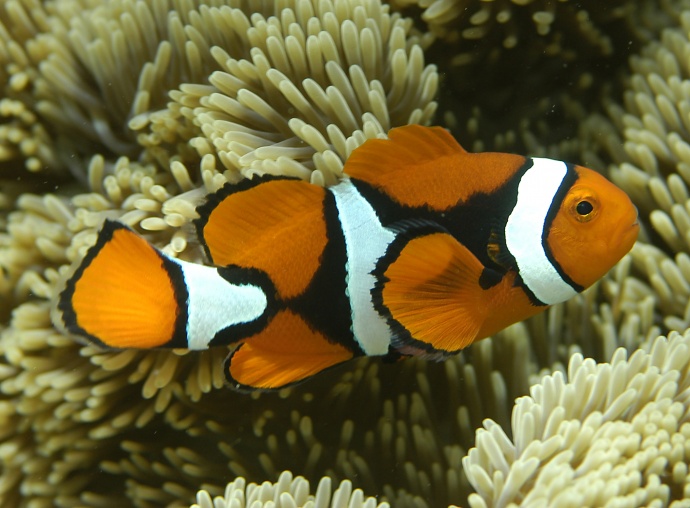Orange Clownfish Under Review For Listing as Threatened or Endangered
By Wendy Osher
“Finding Nemo is getting harder,” that according to scientists at the Center for Biological Diversity.
In fact, the National Marine Fisheries Service is conducting a 90-day review to determine whether or not to include the orange clownfish, known in scientific circles as the Amphiprion percula, on a federal list of threatened and endangered species.
Shaye Wolf, climate science director at the Center pointed toward “global warming” and “acidification of oceans” as the cause of reduced habitat for orange clownfish in coral reefs.
In an agency press release he said, “Endangered Species Act protection and meaningful action to put the brakes on greenhouse gas pollution will help make sure these beautiful fish survive in the wild and not just in the movies.”
The Center for Biological Diversity filed the petition on September 14, 2012, and had actually requested listing for several other reef fish, but the National Marine Fisheries Service found that the petition failed to present a “satisfactory level of scientific or commercial information to justify any action for the remaining six species.”
The fish that were excluded from further review at this time include the following: Hawaiian dascyllus, blue-eyed damselfish, black axil chromis, blue-green damselfish, reticulated damselfish, and the blackbar devil or Dick’s damselfish.
Since the movie Finding Nemo, environmentalists claim the species has been among the most heavily targeted. Rene Umberger, Maui resident and director of the environmental group For the Fishes said, “In 2005, they were the fifth most imported species, with about 450,000 US imports. They were available as captive bred then, but most hobbyists preferred the wild ones. Some still do,” she said.
Umberger notes that the import numbers include both the A. percula, which is being considered for protection, and the A. ocellaris, which are easily confused and mislabeled by those in the aquarium trade.
According to Umberger, the orange clownfish has a very limited range. “Though I’ve been diving throughout the Indo-Pacific, I can confirm only one actual sighting on a remote part of the Great Barrier Reef. The operation I was with said they had greatly diminished throughout their reefs as a result of Finding Nemo.”
In an effort to protect coral reefs and marine life, Umberger created and launched a new mobile app this month that helps users differentiate between captive bred and wild caught species.
The Tank Watch mobile app is described as an educational app that allows consumers, advocates and conservationists to easily identify the most common sea creatures seen in aquariums and quickly determine those animals that are able to be bred in captivity, from those that are taken from the wild. The app lists both of the species under discussion as Good Fish, since they can be bred in captivity.
“By using this app, people who have saltwater aquariums can lessen their impact by making informed purchasing decisions,” said Umberger. “Committing not to purchase wild-caught animals will protect millions of reef fish from the cruel and wasteful wildlife trade and allow the animals to continue to play important roles in their native reef and ocean ecosystems.”
The 90-day petition for review of the orange clownfish listing began on Sept. 3, 2014. To ensure that the status review is comprehensive, NMFS welcomes any information or comments relating to the listing of the Orange Clownfish as endangered.
Written comments can be submited to the Branch Chief of the NMFS Protected Resources Division, 1845 Wasp Blvd., Building 176, Honolulu, HI 96818. All information and comments must be received by Nov. 3, 2014.










